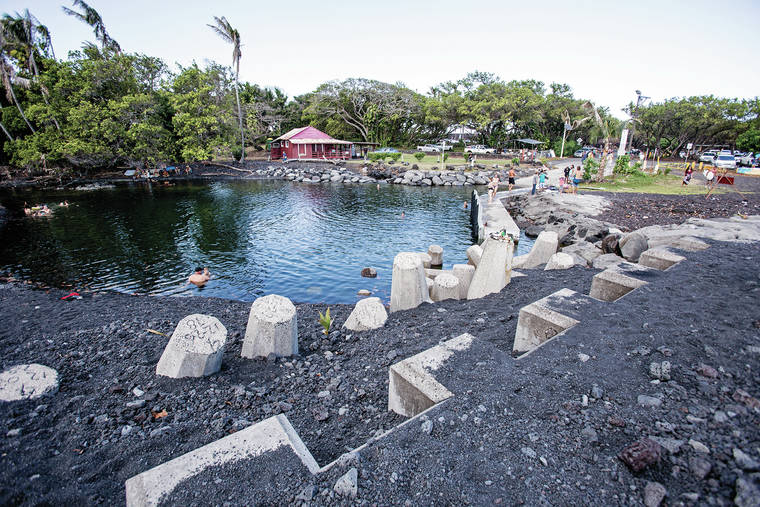HONOLULU — Three years after the eruption of Kilauea volcano, Big Island residents are still waiting for some roads and services to be repaired.
People who live in the area where the volcano destroyed more than 700 structures and forced the evacuation of about 3,000 residents say they are frustrated by the slow pace of repairs to a road that leads to a popular beach park, the Honolulu Star-Advertiser reported Monday.
Leah Gouker, a teacher at a local school, says she can’t enjoy the beach park she grew up in because it still has no working bathroom, no water and no good places to swim.
“Honestly, I haven’t been to the beach in seven months,” she said. “Can’t they just bring the machines and dredge the ramp?”
Lava destroyed the road to Isaac Hale Park and Pohoiki Boat Ramp, which is now covered in a new black sand beach. There is a new road that detours to the site, but it turned Gouker’s seven-minute drive to the beach into 45 minutes.
The boat ramp and beach park are not the only projects that are not yet completed.
Damage to public infrastructure reached an estimated $236.5 million, according to county officials. That includes miles of roads and waterlines, nearly 1,000 utility poles and two geothermal wells. An electrical substation was also cut off.
“It’s kind of sad. It’s taken so long,” said Robert Golden, president of Lower Puna Rising, a community group.
“There has been some progress, but I wish the people in government lived where we live so they can experience what it’s like to go to bed at night,” said Golden, a Leilani Estates subdivision homeowner whose property escaped the lava. Leilani Estates was at the center of the 2018 eruption that began on May 3.
Douglas Le, the county’s recovery manager, said the county is doing what it can with the resources available.
Le was named the county’s recovery officer in 2019 after helping New York City coordinate recovery from Super Storm Sandy.
“The scale of funding is different, the community context is very different, the capabilities of local government are different, but what remains the same are the real gut and heart of what we’re trying to do,” Le said.
Hot ground caused by the lava still exists and has impacted the water supply. Water gaskets rated to a certain temperature became vulnerable, making the distribution system unreliable.
“The eruption essentially changed the recharge cycles of the water, mauka to makai, and the quality of the water that we relied upon for these areas are no longer of the quality that we can tap into again,” Le said.

